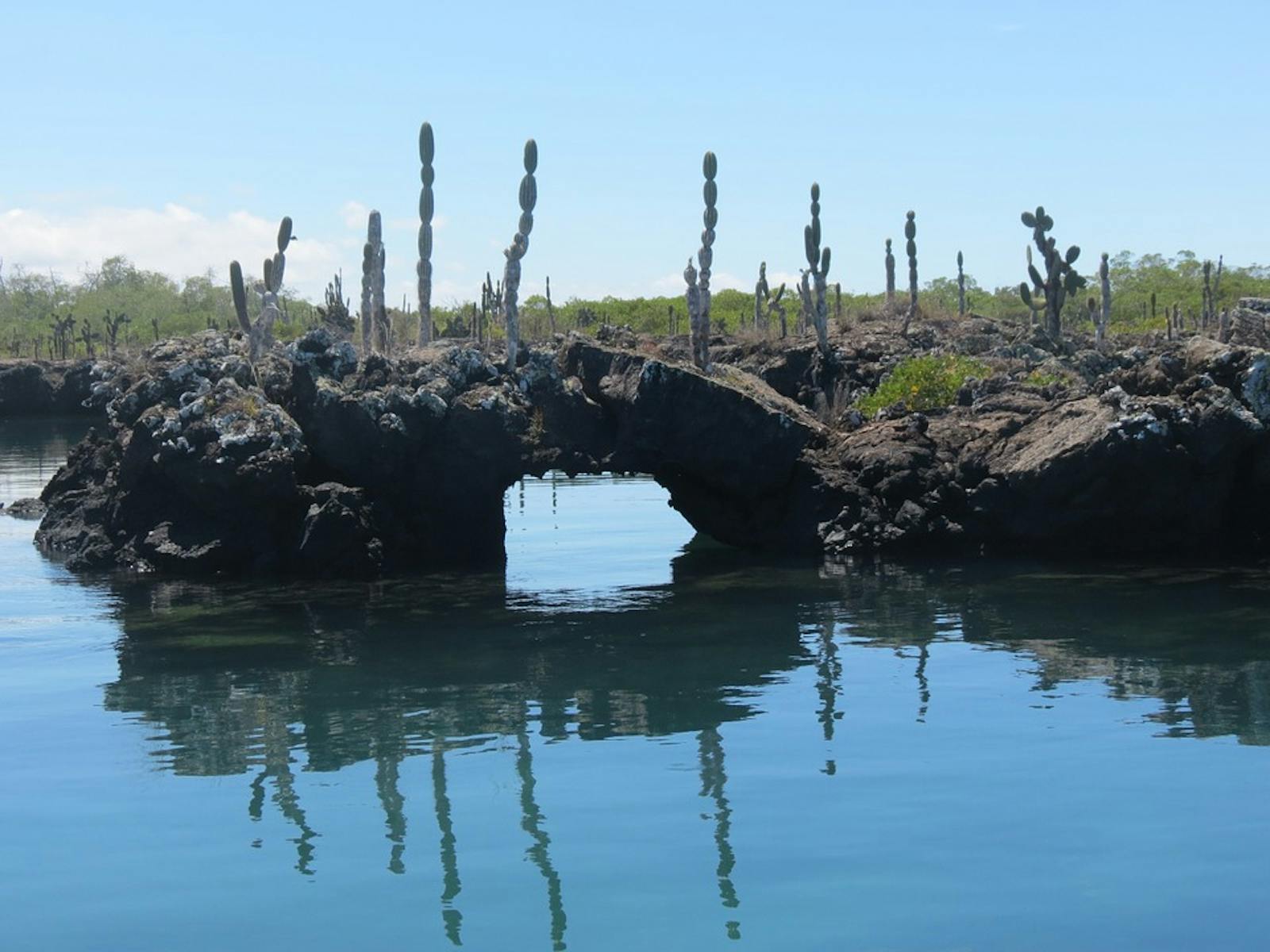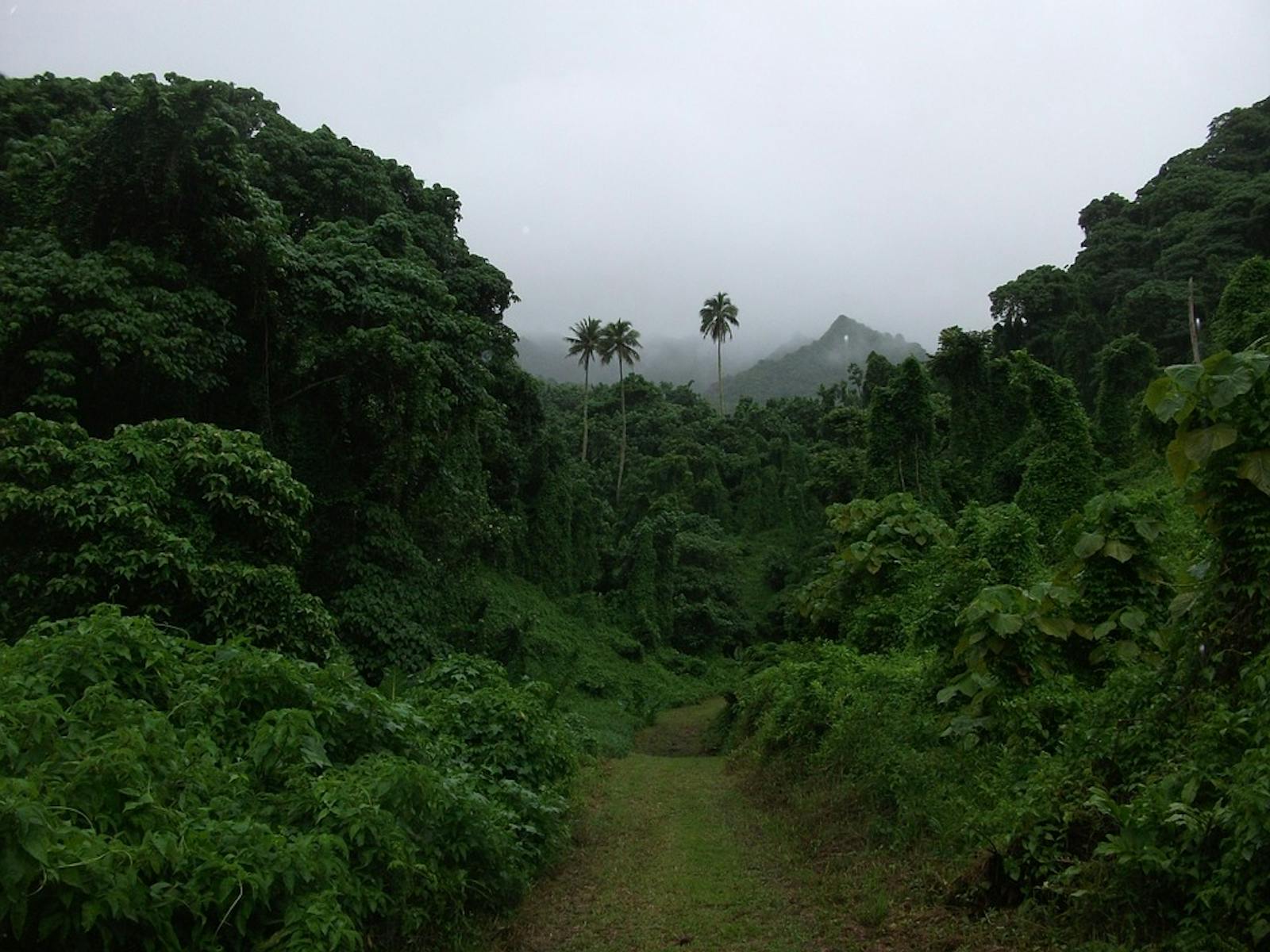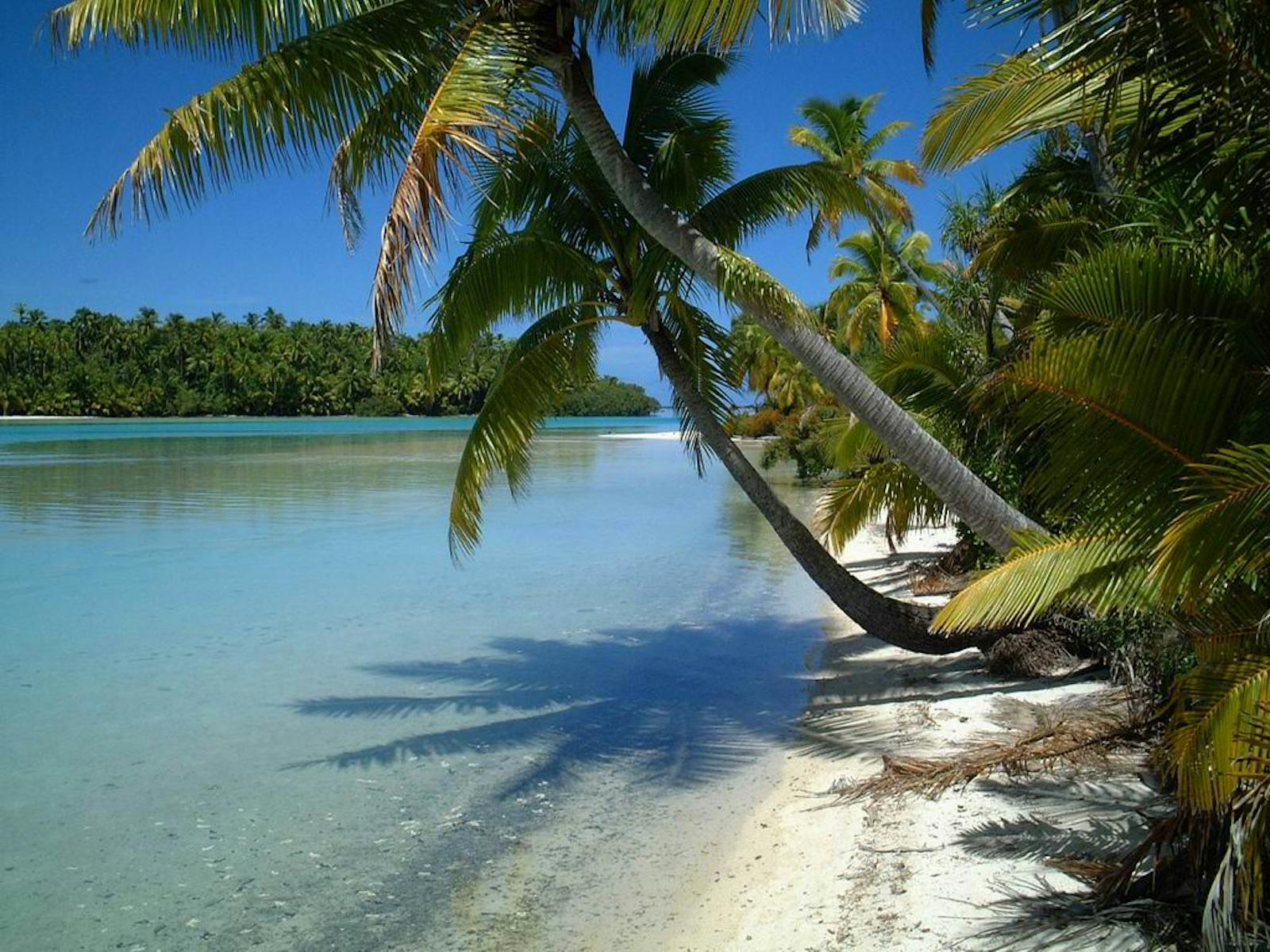Cook Islands Tropical Moist Forests
The ecoregion’s land area is provided in units of 1,000 hectares. The conservation target is the Global Safety Net (GSN1) area for the given ecoregion. The protection level indicates the percentage of the GSN goal that is currently protected on a scale of 0-10. N/A means data is not available at this time.
Bioregion: Southeast Polynesian Islands (OC3)
Realm: Oceania
Ecoregion Size (1000 ha):
21
Ecoregion ID:
620
Conservation Target:
58%
Protection Level:
6
States: Cook Islands
The Cook Islands, one of the most remote archipelagos in the world, are home to some of the planet’s most dazzling birds―the Rimatara lorikeet is a rainbow of colors, and the stunning blue lorikeet with its white bib and bright orange bill is the handsomest of birds. Centered in the South Pacific, about 1,000 km east of Niue, the southern Cooks include nine main islands: Palmerston Atoll, Aitutake, Manuae (Hervey), Takutea, Miti’aro, Atiu, Ma’uke, Rarotonga, and Mangaia. Rarotonga has steep volcanic slopes while other islands range from raised limestone (makatea) to atolls.
Lowland forests grade into montane and, higher up, cloud forests on the taller islands. Montane forests start roughly from 50 to 200 m and have tree genera such as Homalium, Canthium, Elaeocarpus, Fagraea, Fitchia, Metrosideros, and Ixora. The massive roots of Fagraea and Fitchia help stabilize steep slopes. Cloud forests start at around 400 m elevation. These are low-stature habitats of Metrosideros, Weinmannia, Ascarina, and Elaeocarpus. Freycinetia lianas and Fitchia shrubs tangle the mossy understory. On the limestone substrate makatea islands one finds Eleaeocarpus, Hernandia, Barringtonia, and Pandanus scrub forests.
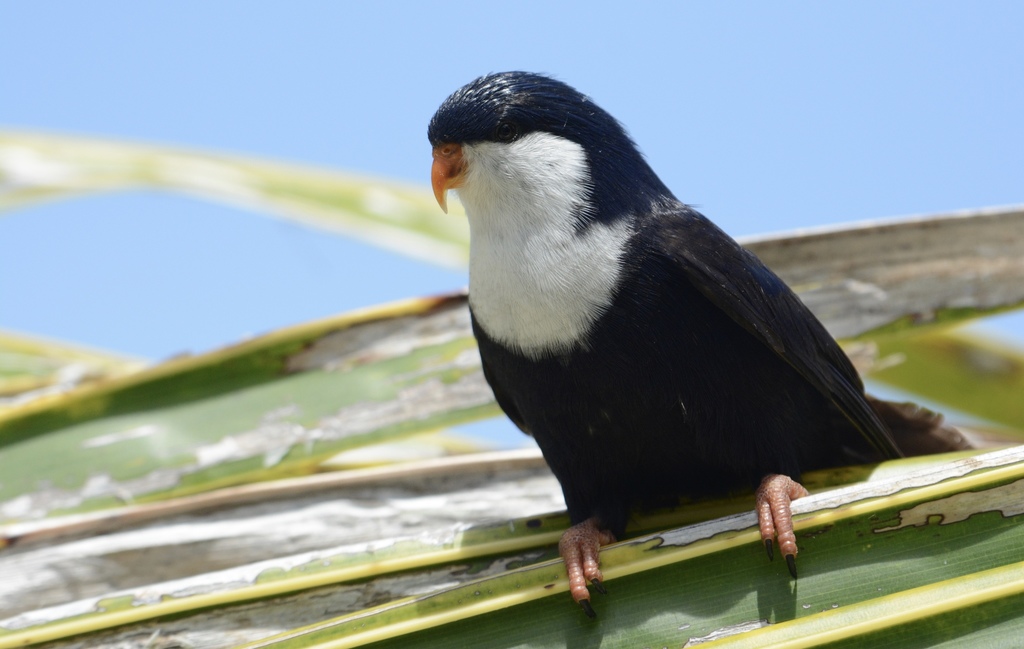
The flagship species of the Cook Islands Tropical Moist Forests ecoregion is the blue lorikeet. Image credit: Creative Commons
Few of the 130 native plants are unique to the Cook Islands, though the cloud forests of Rarotonga are known to have nine locally-endemic species. Typical for oceanic islands in the region, there are several species of widespread skinks and geckos. The land snail fauna is rich with many endemic species. Eight species of range-restricted birds occur in the archipelago, of which six are strictly endemic.
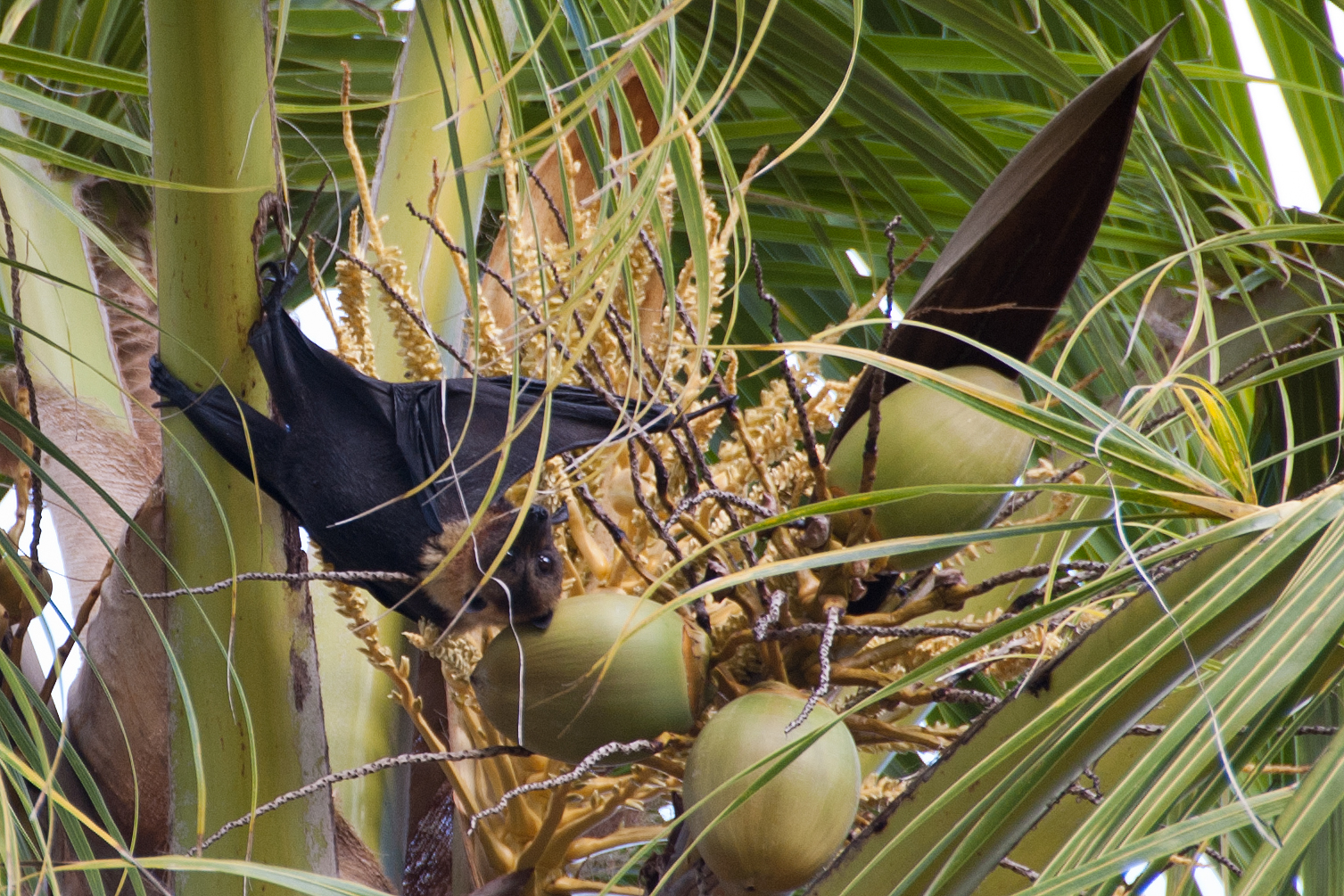
Pacific flying fox. Image credit: Creative Commons
The bright Rimatara and Blue lorikeets are unique to the islands, as are a reed-warbler (Acrocephalus kerearako), fruit dove (Ptilonopus rarotongensis), Atiu swiftlet (Collocalia sawtelli), Rarotonga monarch (Pomarea dimidiata), Rarotonga starling (Aplonis cinerascens), and Mangaia kingfisher (Todiramphus ruficollis). The Pacific flying fox (Pteropus tonganus) is the only native mammal in the Cook Islands.
Throughout the islands, scant native vegetation remains in the lowland zones due to thousands of years of clearing for settlements, subsistence agriculture, and some cash crops. Rarotonga still retains intact montane and cloud forest. Some native vegetation persists in the most rugged, inaccessible terrain of the makatea islands. Invasive species, particularly black rats, cats, and mynahs, are an ongoing and major threat to native species. The African ant (Pheidole megacephala) caused extinction of 11 of the 13 endemic snail species on Rarotonga. About 30% of the islands are included in protected areas such as the Takitumu Conservation Area that protects the endangered Rarotonga monarch and the Te Manga Roa Nature Reserve.
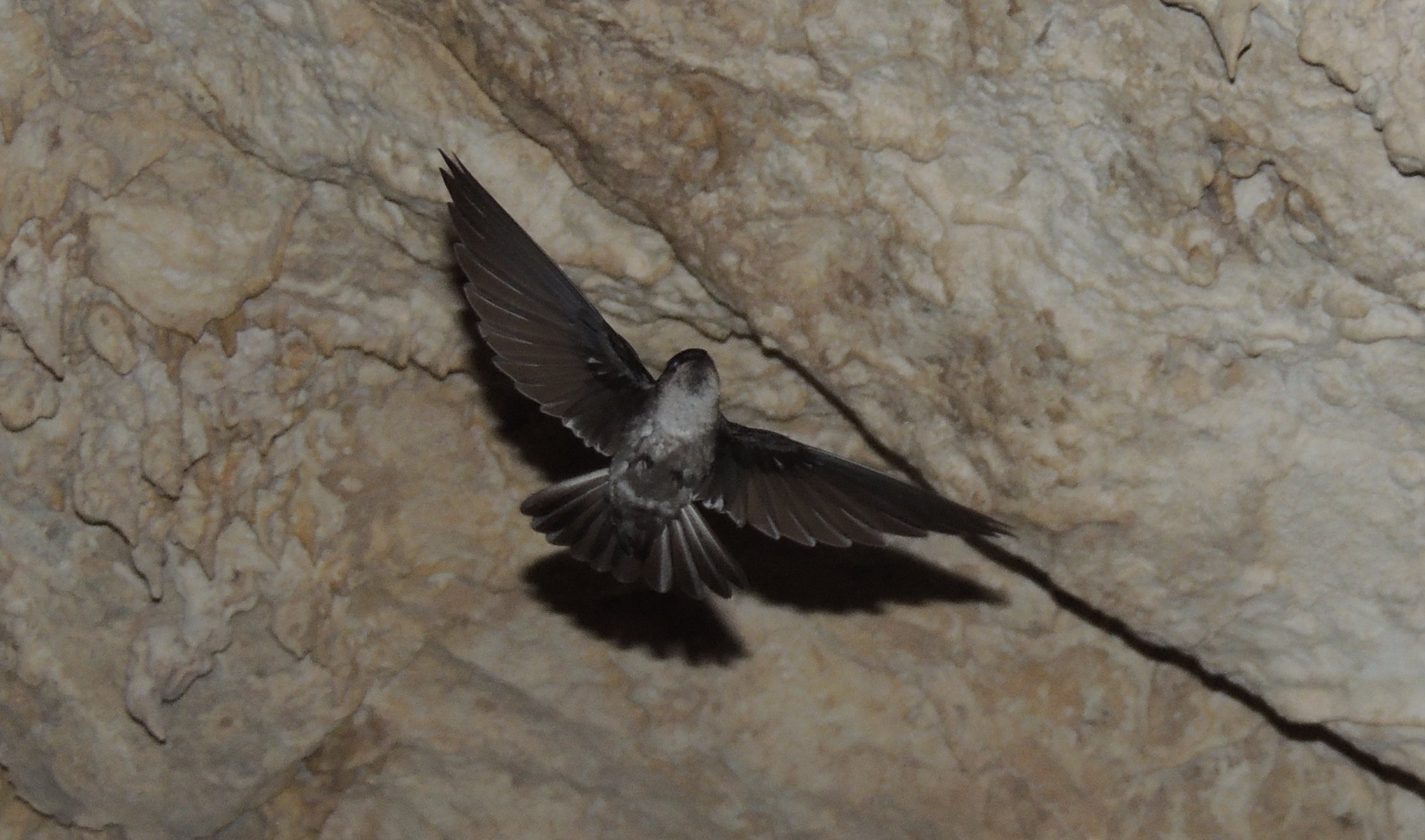
Kopeka bird. Image credit: Creative Commons
The priority conservation actions in the next decade are to: 1) maintain Aitutaki in a rat-free state through careful control of containers and visiting marine vessels and support the community-conservation forests; 2) support the Atiu and Takutea community initiatives to protect native habitat and control invasive species; and 3) expand efforts to control rats and cats in the central Rarotonga foothills and highlands.
Citations
- Allison A. 1996. Zoogeography of amphibians and reptiles of New Guinea and the Pacific region. Pages 407-436 in Keast A, SE Miller, editors. The Origin and Evolution of Pacific Island Biotas, New Guinea to Eastern Polynesia: Patterns and Processes, SPB Academic Publishing, Amsterdam.
- *CEPF. 2007. Ecosystem Profile: Polynesia/Micronesia Biodiversity Hotspot. Critical Ecosystem Partnership Fund, Washington, DC.
- Merlin M. 1985. Woody vegetation in the upland region of Rarotonga, Cook Islands. Pacific Science 39:81-99.
